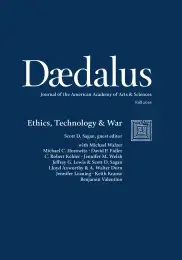New Technology for Peace & Protection: Expanding the R2P Toolbox
New technological advances in digital information, algorithmic forensic data analysis, autonomous surveillance vehicles, advanced robotics, and multispectral sensors can help avert war, introduce more effective peacekeeping, lessen the impact of conflict on civilians, and help rebuild war-torn states. Lloyd Axworthy and A. Walter Dorn discuss that when such technologies clearly show that international humanitarian action is urgently needed, including the use of force as a last resort, then those same tools can be used to constrain harmful forms of intervention and ensure that enforcers are abiding by international law and UN guidance. It is an ethical failure when such technologies exist to save lives, reduce risks, and secure peace, but are not employed.
One of the key challenges for the international community is to apply new technology under effective international authority to support peace. Fortunately, as will be shown, institutional reform is emerging to enable new peace strategies and new un applications for the preventative, proactive, and protective use of new technologies. Another very promising development is the increasing technological capacity of local populations to provide for their own protection. The Norwegian Centre for Humanitarian Studies rightly asserts:
Affected populations are the primary responders in disasters and conflict zones, and actively use information technology to self-organize, spread information about their condition, call for aid, communicate with humanitarian actors, and demand accountability. New technologies also have the potential to put responders at the center of the entire life cycle of humanitarian action.1
Exciting prospects lie in advancing population-centric early-warning systems to enhance prevention through the quantum leap in information technology, big data collection, and analysis. These can substantially improve the ability to anticipate looming issues and enable those directly affected to become involved in a preventative response. . . .
